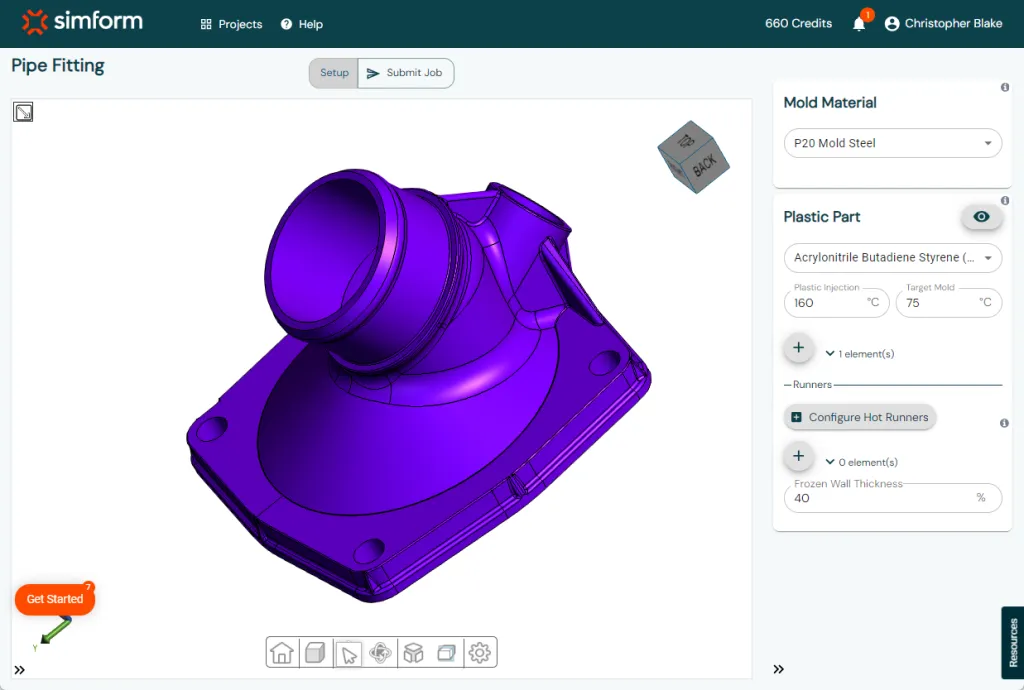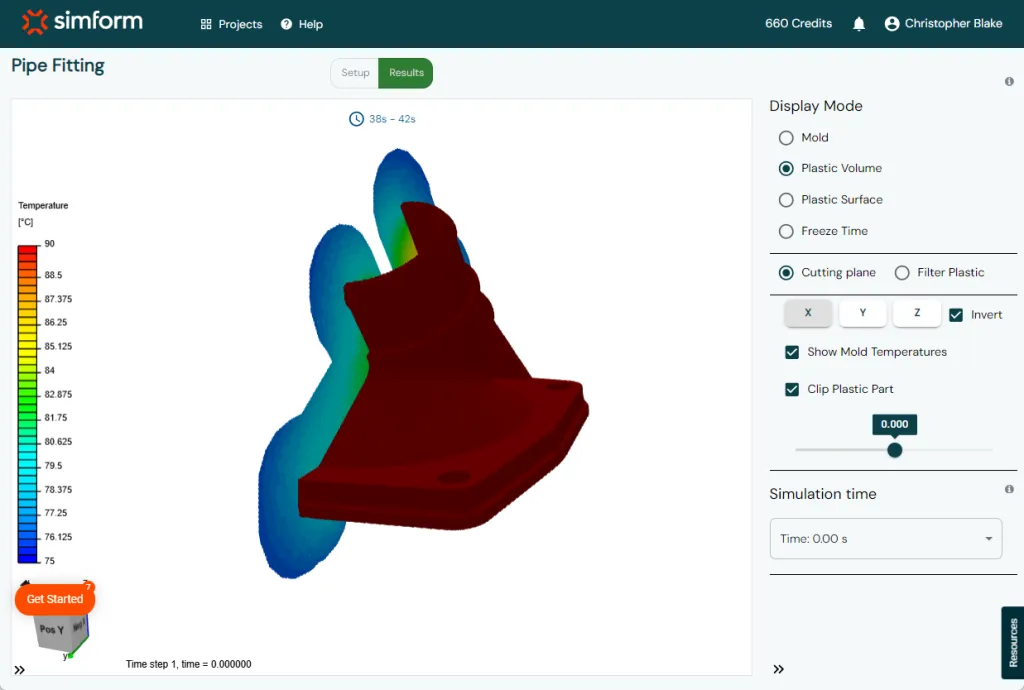by Arnaud Divialle
Solutions for product OEMs to get to market faster and reduce development and production costs
Designing easy-to-manufacture parts
The challenge for product OEMs is to keep manufacturing costs low enough that they can achieve reasonable profit margins while minimizing the time to market.. It’s a balancing act.
Large product OEMs have tooling engineers who can implement design for manufacturing (DFM) guidelines. Small product OEM companies, however, typically don’t have that advantage. In general, plastic part designers are experts in designing parts to meet form, fit, and function requirements, but most don’t have injection molding expertise. As a result, all product OEMs struggle to design parts that are cost-efficient to produce – but the situation is worse for small OEMs.
We heard from a senior molder that easily half of the parts he quoted over the course of his career were not moldable. Unfortunately, this case is the rule rather than the exception.
When parts are not designed to DFM guidelines, they are more likely to have high defect rates or longer cycle times, meaning they take longer to reach the market and are more expensive to manufacture.
Managing manufacturability challenges
Facing competitive pressure to reduce costs and get to market faster, part OEMs are having to find solutions to the following three manufacturing challenges.
1. Part analysis iterations and delays
At the request for quote (RFQ) stage, molders perform a part analysis to identify any changes necessary to improve the part manufacturability. Those are changes intended to reduce the risk of defects, the mold cost, and sometimes, the part production cycle time and cost.
At this stage, most parts require significant design changes, with some going through as many as four rounds of iterations with the part designer to reach an acceptable state, which increases tool development lead time and costs. As these changes typically occur very late in the process, once the part (and the product it will be use in) have largely been finalized, making any change can be painful.
A similar situation crops up, even in companies that have tooling engineers on staff, when multiple low-value added iterations take place between the molding expert and the designer. Instead of adding value through part optimization or reducing risk by catching complex problems, tooling engineers often end up spending far too much time on trivial and boring checks.
Reducing the number of iterations would help get the parts to market faster. For both small and large product OEMs, this would be possible if the part designer had an easy way to verify a part meets the basic manufacturability requirements.
2. Design process inefficiency
You may have heard of the 80/20 rule (the “Pareto Principle”), the idea that 80% of outcomes are driven by 20% of your efforts. This is not an exact scientific principle, but more of a truism based on broadly shared experiences and consensus.
Nonetheless, some version of the 80/20 rule has been proven out across many manufacturing-related industries, such as this study in the construction industry that showed “almost 80% of cost deviations were related to design” while roughly 17% or so were tied to actual physical construction effort. In other words, about four-fifths of the project's value is created in the early stages, and only a fifth is tied to the actual physical task execution.
In plastic injection part design, we agree — and generally observe that up to 80% of the part cost, and most of the part quality, is the direct result of design decisions. This puts pressure on molders, because they can only improve the 20% portion they control.
For OEMs to efficiently produce high quality, cost-effective parts, part designers would need to be able to take manufacturing requirements into account.
Some companies use design guidelines in an effort to address manufacturing requirements. However, the capabilities and scope are limited, and in some cases, meeting manufacturing requirements, for example temperature uniformity upon ejection, would require part designers to learn how to use new tools.
As the saying goes, you can’t improve what you don’t measure. If part designers could evaluate the manufacturing performance and cost of the components they design, it would become possible to establish cost targets and thus design cheaper parts.
By giving part designers the ability to easily and independently assess the manufacturing cost and quality of their part, OEMs could address the largest quality and cost drivers early in the design process.
3. Sustainability and new materials
With today’s increased focus on sustainability, come added challenges.
From a technical standpoint, a wider range of plastic materials must be considered, including recycled and bioresins. Each material comes with its own set of manufacturing parameters and constraints, which affect both resin cost and cycle time, thus driving the final cost of the part.
How can the impact of the choice of plastic resin be taken into account during the design phase?
Wouldn’t it be good if part designers could compare different concepts and explore the benefits of different materials to see for themselves the impact material choice has on the final manufacturing cost of their components?
A solution within reach
If OEMs want to reduce the time it takes to get parts to market, reduce the cost of product development and manufacturing, while improving part quality, they need to ensure part designers take the manufacturing process into account with their designs.
Currently, firms rely on the expertise of external molders or on internal tooling engineers, but in both cases, it adds delays and increases the cost of the development process. Involving external experts late in the process further reduces the ability to make relevant changes efficiently. The situation can only get worse with the upcoming sustainability requirements.
Ensuring manufacturability is considered early in the injection molding part design process is the key to accelerating development and increasing speed to market. The good news is that new tools are being developed to enable part designers and other employees without molding expertise to easily account for the manufacturing constraints of plastic injection.

SimForm Feasibility
SimForm Feasibility was developed to solve some of the core challenges of plastic part design for injection molding.
- Assess part temperature uniformity and identify hot spots to confidently catch part quality risks very early in the process.
- Estimate cycle time (and thus cost) for a part and find hot spots based on thermal performance without mold being designed.
- Give part designers the ability to account for manufacturing cost and quality, transforming risks into important decision criteria.
- Give tooling engineers the ability to run checks faster so they can spend their valuable time on higher value added tasks.
- See the areas of the part that have the most impact on cooling time. This equips part designers and tooling engineers with the data needed to make decisions about design or resin changes.

Features:
- Very fast (15min)
- No need for simulation expertise
- Pay-as-you-go
- Cloud-based (no need for powerful and expensive equipment)
- Easy to use, regardless of technical background or company size
To learn more about SimForm, contact us.